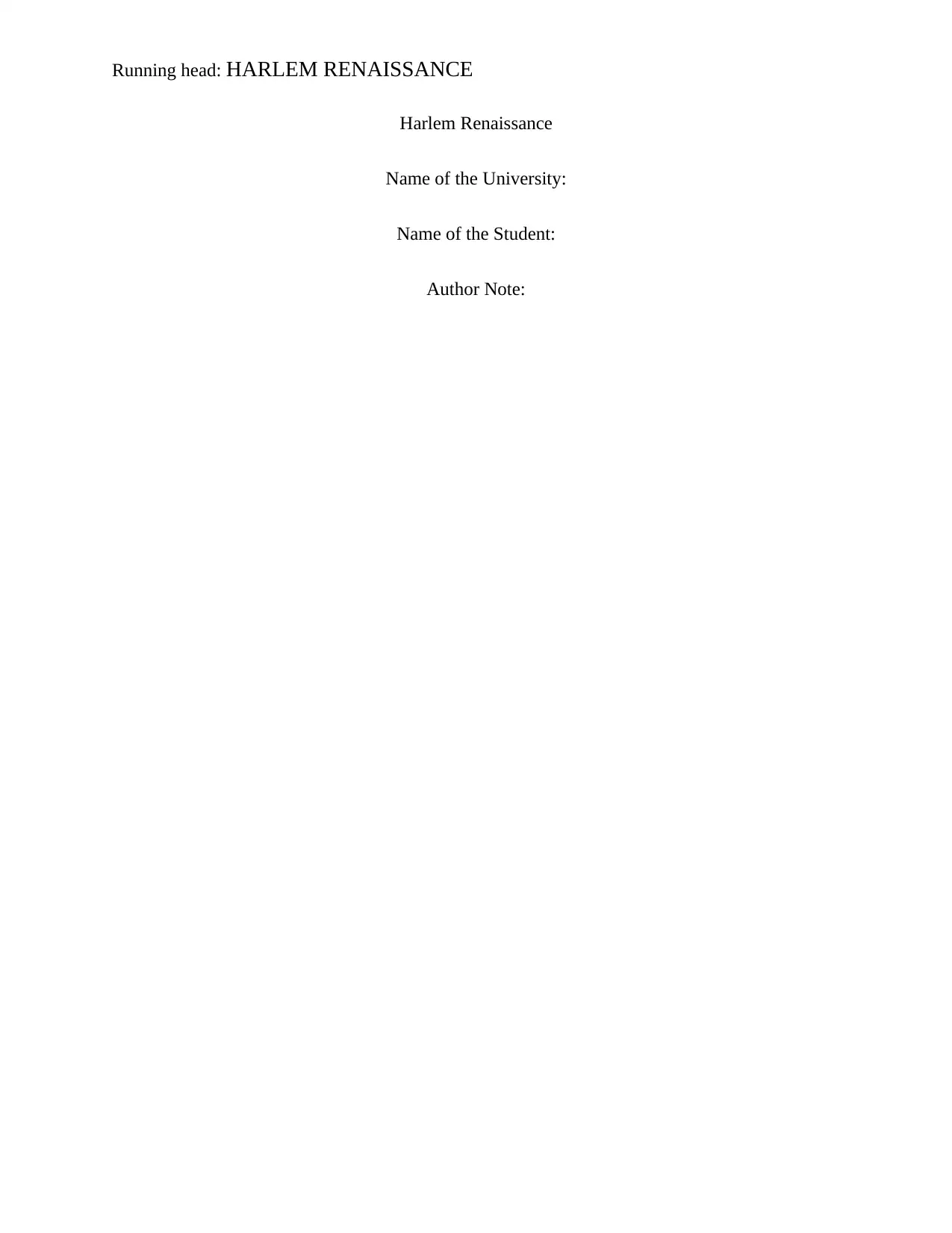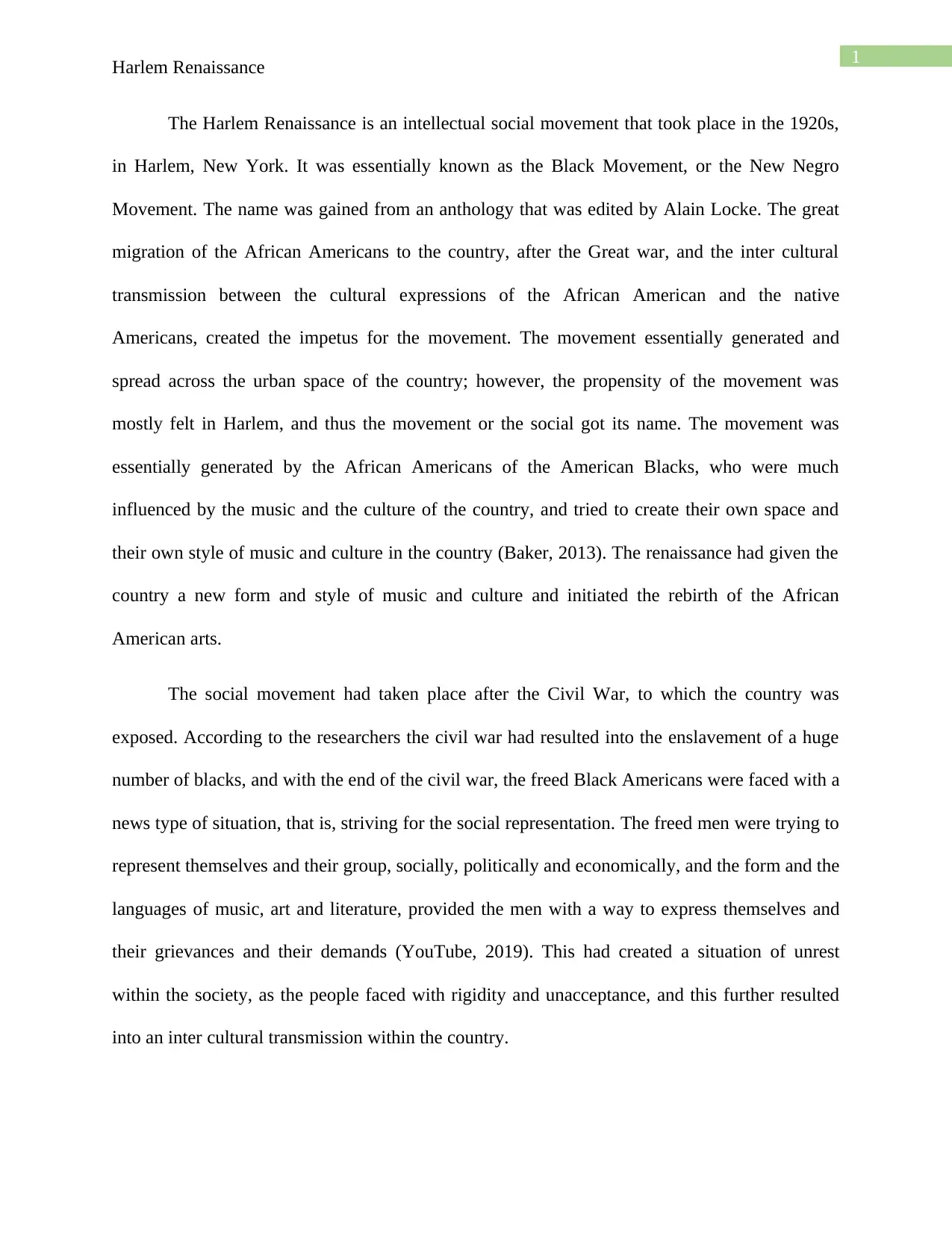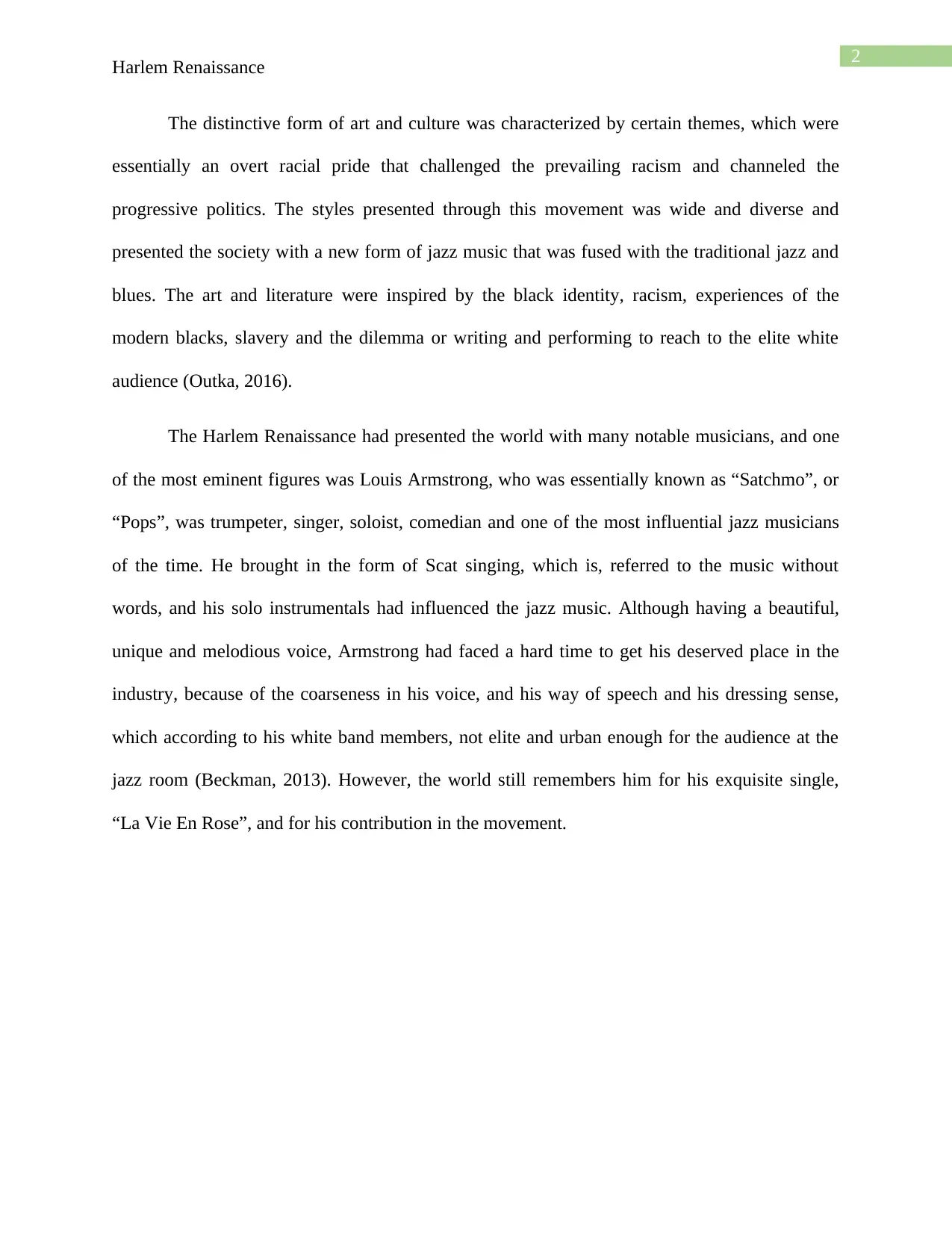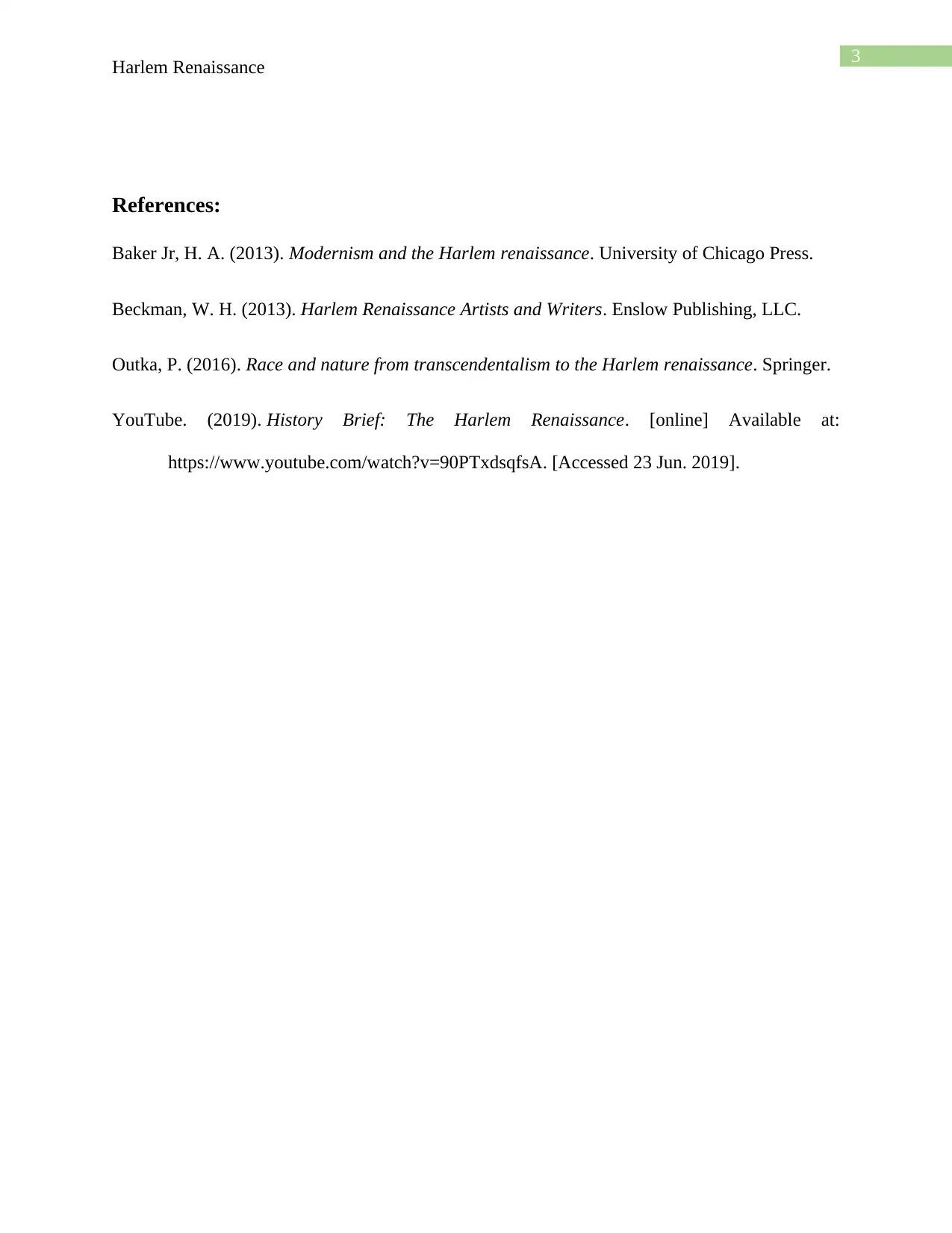Essay on the Harlem Renaissance: Music, Culture, and Identity
VerifiedAdded on 2022/11/30
|4
|761
|395
Essay
AI Summary
This essay delves into the Harlem Renaissance, a significant intellectual and social movement of the 1920s centered in Harlem, New York, also known as the New Negro Movement. It examines the movement's origins, spurred by the Great Migration of African Americans and cultural exchange, focusing on its influence on music, art, and literature. The essay highlights key themes such as racial pride, challenges to racism, and the emergence of new jazz styles, while also discussing the contributions of notable figures like Louis Armstrong. It explores the socio-political context after the Civil War, where African Americans sought social and political representation through cultural expression. The essay also addresses the challenges faced by artists like Armstrong in gaining recognition. The essay uses references to support the information and provides a comprehensive overview of the Harlem Renaissance and its enduring legacy.
1 out of 4











![[object Object]](/_next/static/media/star-bottom.7253800d.svg)